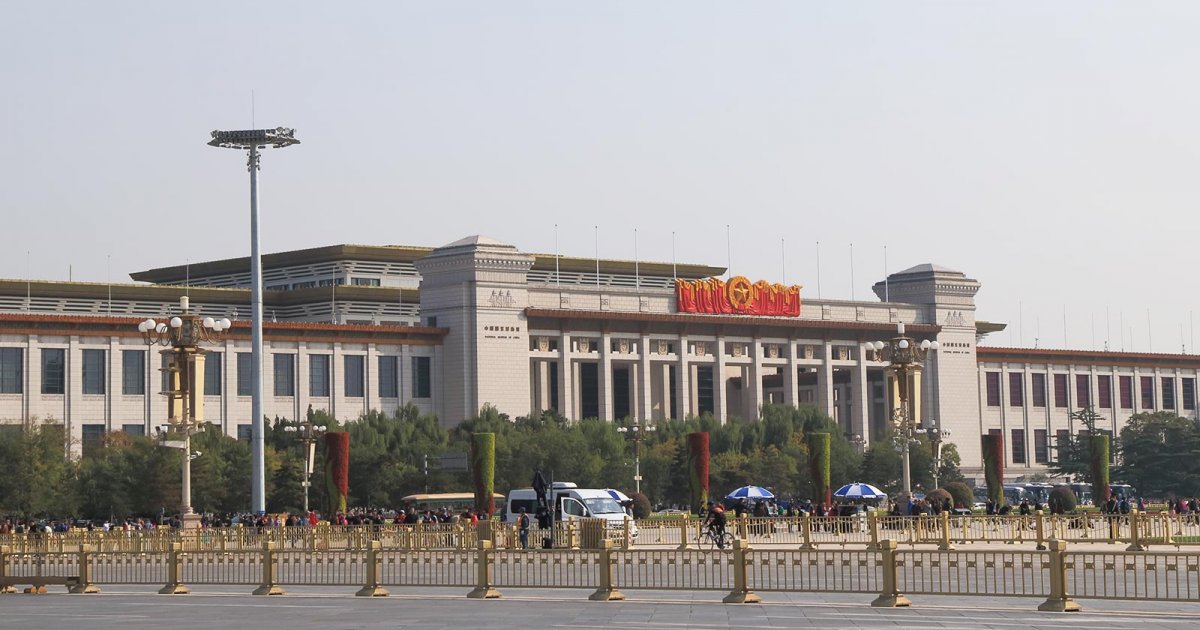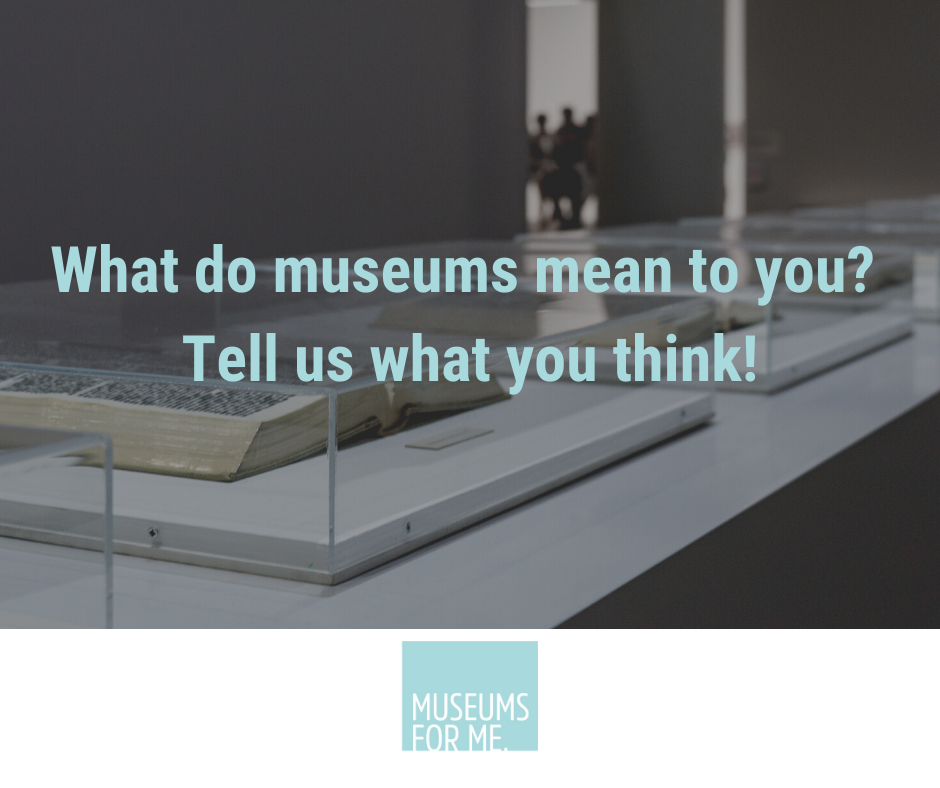I recently took the Museums For Me survey, and it made me ponder the significance museums have to me and the society in which we live.
The dire threat COVID-19 poses to the survival of many museums makes these questions especially timely. 90% of the world’s 85,000 museums temporarily shut this year, and UNESCO fears one in eight–some 11,000 of them–may never reopen.
If museums are going to bounce back rapidly after a vaccine is distributed and lockdown restrictions eased, then they need to have their finger on the pulse of their communities, and be ready with exhibits and activities to lure people back in.
So what to do they mean to me?
Museums have always captured my imagination. I’ll never forget the first time I saw the woolly mammoth at the Royal BC Museum when I was 6, and thereafter demanded to visit the museum and see the mammoth every time I found myself in the city. I dreamed that one day when I grew up I’d be able to visit England’s Bovington Tank Museum and the Panzermuseum in Munster–and finally made it to both in my 20s.

I’ve made a habit of visiting as many museums as I can everywhere I travel because few experiences can teach you more about a place in a single afternoon. That’s the most important effect of museums on me. They are windows into the lives of people in the past, giving them texture and helping us understand how people have lived, worked, played, and fought.
Reflecting back on all the museums I’ve visited, it’s remarkable to consider the vast range of human experiences encompassed by them. The Royal Alberta Museum tells us how Indigenous people have survived on the prairies for millennia, while the still-afloat HMS Victory gives us an astonishing true-to-life glimpse into life aboard a Royal Navy vessel during the Napoleonic Wars. The Gyeongbokgung Palace Museum in Seoul preserves the rituals of Korea’s rulers through the centuries, while the Doukhobor Discovery Centre in Castlegar shows us the way of life of a small immigrant group with their own unique Canadian experience. This scope of human experience means that one can never get bored of going to museums–it’s impossible to ever do more than scratch the surface of the human story in a single lifetime.
Holding a mirror up to our society
Every museum, from the quiet single room pioneer museums in Kootenay towns, to storied national museums overrun by tourists, doesn’t just tell us of the past, but reveals how a people see themselves. Every museum is a mirror held up to our society, both of how it educates people on how we came to be where we are today, but on what they choose to put in the galleries. Over time I’ve come to appreciate this aspect of the museum experience almost as much as the stories told in the exhibits.
A stark example is China’s National Museum in Beijing, which is the world’s largest (by a few feet, the designers phoned up the French National Museum and asked them their building’s square footage and then made sure theirs was slightly bigger). I was eager to learn much more about the grand sweep of Chinese civilization, but the cavernous vaulted galleries were more or less split into two parts: There was Chinese history 5000 BCE – 1857 on the one side,. I was fairly shocked how flat this gallery was, and it went out of its way to stay away from the politics of the period. The other half of the museum was called “National Humiliation to the Road to Rejuvenation.”
This hall told a two phase story, the first being a century of devastation and humiliation that China experienced, beginning with the Opium Wars and Western imperialism in the 19th Century, then invasions by Japan, and the Chinese Civil War. It ended with the story of China’s comeback after the Communist Party’s victory in the Civil War, and their ongoing and historically unprecedented industrialization of the country that gives it superpower status today. The millions who died during the Great Leap Forward, the former independence of Tibet, or the protests in Tiananmen Square, are of course never mentioned or even alluded to. This experience really opened my eyes to how history can be so clearly used to craft a political narrative that can mobilize a nation, while sweeping uncomfortable truths under the rug.

After that experience I really began to notice how we in the West craft our own historical narratives. A visit to the Smithsonian National Museum of American History has crimes of omission just as insidious. While the genocide of the Indigenous is covered in the National Museum of the American Indian, America’s more recent crimes of empire are of course never mentioned. The millions of Korean and Vietnamese dead, America’s sponsorship of dictators, coups, and genocides across the Third World during the Cold War, don’t merit a mention.
America’s national museums carefully craft the narrative that America is a unique nation with a unique responsibility to civilize and inspire the world, much the same way China’s show that all Chinese history led up to the victory of the Communist Party, and they’ve been perfecting their nation ever since.
Most museums obviously aren’t intended to forward political goals the way these two do, but once you start looking for it you begin to notice that all museums inevitably exhibit biases of to some degree, consciously or unconsciously, and those biases are revealing.
Oftentimes they can be unavoidable due to the prejudices of those who first built the museum, leaving deep imprints on the development of its collections. A curator of a museum in a small Canadian town told me that while there had been many Indigenous, Chinese, and South Asian people living in the community during the pioneer era, the original curator for much of the 20th Century made no effort to record their stories, or preserve artifacts related to them. He deemed their history to be of lesser worth than that of the white pioneers. In his mind they were best forgotten.
Now over a century later, a new curator looking to paint a more complete picture of the community’s history is at a loss as to where to begin the search for these stories–the trail has gone cold. If those stories haven’t been preserved in a museum, there’s a very good chance they’ve been lost to time.
What do we want to remember?
This brings me to the other role of museums that I find so compelling: preserving history. What we value enough to preserve tells us so much about the society that we live in. Whose lives and what part of those lives are worth remembering? What are we OK with forgetting?
The history of Classical Antiquity furnishes an example. In Ancient Greece and Republican Rome tens of thousands of manuscripts were written on mathematics, astronomy, philosophy and the natural sciences. The plays of Aeschylus, Euripides, and Sophocles are still some of the most compelling pieces of theatre ever produced.
Yet only a fraction of one percent of all these works from ancient times have survived to the present. Only 7 of the 90 plays Aeschylus wrote survive. And the entire works of some playwrights who were considered better than any of the three mentioned above have been lost altogether. We can only guess as to what their plays were like.
Why don’t we have all these works today? While many people will immediately reference the burning of the Library of Alexandria, the truth is more complicated and more interesting.
The parchment upon which these documents were written tended to last around 500 years before crumbling to dust. So every 500 years, somebody had to go through the effort and expense to copy these manuscripts by hand. So while many of these works proliferated in libraries the later Roman and Byzantine Empires. If nobody was around at say 500 CE or 900 CE who deemed them valuable enough to preserve, then they crumbled to dust, or were even scrubbed clean and the papyrus reused (a palimpsest) for something people felt was more important at that time. This was the fate of one of Archimedes mathematical treatises, “On Floating Bodies.”

So for a work from Classical Antiquity to survive to the present, it had to go through several filters, where whoever was in possession of the manuscript at around a 500 year interval had to decide it was important enough to copy over and preserve for future generations.
So what did make it to the present? While far more than 99% of everything from this period was lost, including almost everything we would value today–the philosophy, science, theatre, literature, etc.–two types of manuscripts did survive in huge numbers: treatises on military tactics and strategy, and a truly astounding number of works on agriculture and farming.
That is what people–or more accurately the ruling classes with the resources for copying manuscripts–were interested in at those particular moments in history. People at those 500 year intervals in the Middle Ages didn’t care much for geometry or drama. They cared about farming and war.
We are supremely fortunate some of the good stuff was copied over by the Arabs and Byzantines–after all, would the Renaissance have ever happened without those copies? It’s an open question. But trying to imagine the scale of the human knowledge that was lost is staggering.
So this is why I think the role of museums is so fascinating and important. They get to decide what we remember as a society. The past decisions by museum curators and archivists have shaped our understanding of the past to a profound degree, and the decisions they are making today will undoubtedly shape how we understand our present in the future.
Museums are some of the most invaluable institutions in our society for understanding ourselves and the world around us.
Thanks for reading and please take the Museums for Me Survey! It’ll be immensely useful for helping Canada’s museums bounce back after COVID!
